Volvo EC40 vs VW ID.4 – ¿Cuál es la mejor opción?
Dos coches, un duelo: Volvo EC40 se enfrenta a VW ID.4.
¿Quién gana en rendimiento, consumo y relación calidad-precio? ¡Descúbrelo ahora!
Volvo EC40 vs VW ID.4: The Battle of the Electric SUVs
The electric SUV market continues to thrive, with contenders vying for the crown of efficiency, performance, and design excellence. Today, we delve deep into the specifications of two promising candidates in this electrified league: the Volvo EC40 and the VW ID.4. These models stand as significant competitors in the segment, both equipped with technological advancements and the eco-friendly promise of all-electric motoring.
Power and Performance
The Volvo EC40, launched in 2024, offers a range of power options, with its peak performance reaching up to 408 HP. This propels the SUV from 0 to 100 km/h in a mere 4.6 seconds in its most powerful variant. In contrast, the VW ID.4 provides a broad spectrum of power outputs, topping at 340 HP, and achieves the 0-100 km/h sprint in 5.4 seconds in its higher configurations.
Both vehicles feature all-wheel-drive options, ensuring traction and stability, with the EC40 offering a choice between rear-wheel drive and all-wheel drive. Interestingly, both vehicles share an identical top speed of 180 km/h.
Electric Range and Efficiency
Electric range is where these vehicles showcase their efficiency. The Volvo EC40 boasts an impressive range peaking at 584 km on a full charge, while the VW ID.4's best offering gives a substantial range of up to 572 km. The energy consumption of both vehicles hovers around the 16-18 kWh/100 km mark, making them both efficient choices in today's market.
Battery and Charging
The EC40 provides two battery capacity options: 67 kWh and 79 kWh, catering to a variety of needs and driving patterns. The ID.4, on the other hand, offers a 77 kWh battery and a smaller 52 kWh option for its less demanding variants. This strategic battery planning empowers each model to cater effectively to differing consumer priorities.
Interior and Practicality
Both models are crafted with five doors and can comfortably seat five passengers. Inside, the Volvo EC40 provides a trunk capacity of 404 liters, while the ID.4 surpasses this with a spacious 543 liters. These measurements highlight the practical advantages of the ID.4 for those who prioritize cargo space.
Design and Dimensions
Visually, the Volvo EC40 spans a length of 4440 mm, whereas the VW ID.4 extends slightly further at around 4584 mm depending on the variant. Despite their size difference, both exhibit stylish design cues that stay true to their brand ethos – Volvo with its Scandinavian simplicity and VW with its progressive styling cues.
Conclusion: A Matter of Preference
Ultimately, choosing between the Volvo EC40 and VW ID.4 depends on what consumers value most. The EC40 stands out with its incredible range and powerful performance, catering to those who desire a potent yet efficient driving experience. Meanwhile, the ID.4 offers more practicality in terms of cargo space, alongside satisfying performance outputs.
Regardless of the choice, both models underscore the electrifying promise of sustainable mobility. With zero tailpipe emissions, impressive technological features, and the stature of an SUV, both the Volvo EC40 and VW ID.4 are emblematic of the automotive industry's exciting electric future.
Aquí vienen los hechos: las diferencias técnicas en detalle
Costes y consumo: En términos de economía diaria, ambos modelos muestran contrastes interesantes.
VW ID.4 tiene una ventaja claramente perceptible en precio: parte desde 41000 €, mientras que el Volvo EC40 cuesta 55300 €. La diferencia es de unos 14292 €.
En consumo eléctrico, la ventaja es para el VW ID.4: con 15.60 kWh cada 100 km, es mínimo más eficiente que el Volvo EC40, que necesita 16.20 kWh. La diferencia ronda los 0.60 kWh.
En autonomía, el Volvo EC40 ofrece un rendimiento casi imperceptible mejor: alcanza hasta 584 km, unos 15 km más que el VW ID.4.
Motor y rendimiento: Potencia, par motor y aceleración son las cifras clásicas para los amantes del motor – y aquí aparecen diferencias notables.
En cuanto a potencia, el Volvo EC40 tiene una ventaja evidente: 442 HP frente a 340 HP. Eso supone un aumento de unos 102 HP CV.
En aceleración de 0 a 100 km/h, el Volvo EC40 es algo más rápido: 4.60 s frente a 5.40 s. Es aproximadamente 0.80 s más veloz.
No hay diferencias en velocidad punta – ambos alcanzan 180 km/h.
También hay diferencias en el par motor: el VW ID.4 empuja apenas perceptible con 679 Nm frente a 670 Nm. La diferencia ronda los 9 Nm.
Espacio y practicidad: Más allá del rendimiento, el confort y el espacio interior son clave. Aquí se decide cuál es más práctico y versátil.
Ambos modelos ofrecen espacio suficiente para 5 personas.
En peso en vacío, el VW ID.4 es ligero más ligero – 1975 kg frente a 2065 kg. La diferencia ronda los 90 kg.
En capacidad de maletero, el VW ID.4 ofrece distinto más espacio – 543 L frente a 404 L. La diferencia es de unos 139 L.
En capacidad máxima de carga, el VW ID.4 es claramente perceptible mejor – hasta 1575 L, unos 379 L más que el Volvo EC40.
En capacidad de carga útil, el VW ID.4 distinto se impone – 551 kg frente a 435 kg. La diferencia es de unos 116 kg.
En general, el VW ID.4 se muestra lidera claramente en el balance general y se lleva el título de DriveDuel Champion.
Destaca por su equilibrio general y por ser el compañero más versátil en el día a día.
VW ID.4 Video
Volvo EC40
El EC40 ha llegado para revolucionar el mercado de los SUV compactos, ofreciendo un diseño atractivo y moderno que captura miradas. Su interior combina confort y tecnología avanzada, creando un ambiente ideal para los conductores urbanos. Además, su eficiencia energética lo convierte en una opción responsable para aquellos que buscan cuidar el medio ambiente sin sacrificar estilo.
detalles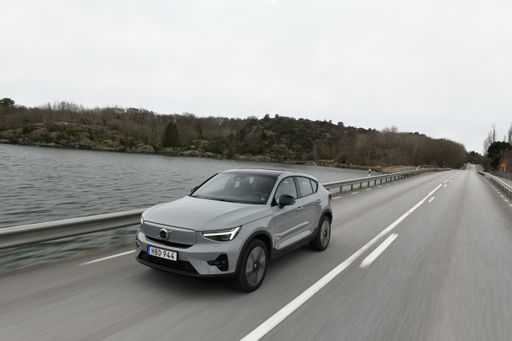 @ media.volvocars.com
@ media.volvocars.com
VW ID.4
El Volkswagen ID.4 se destaca como un SUV eléctrico que combina un diseño moderno con un enfoque sostenible. Su amplitud interior y la tecnología avanzada hacen de cada viaje una experiencia placentera, perfecta para quienes buscan confort y eficiencia. Con su autonomía y características innovadoras, el ID.4 se presenta como una opción atractiva en el creciente mercado de vehículos eléctricos.
detalles @ Volkswagen
@ Volkswagen
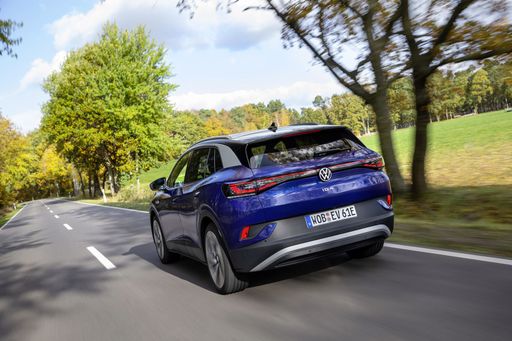 @ Volkswagen
@ Volkswagen
 @ Volkswagen
@ Volkswagen
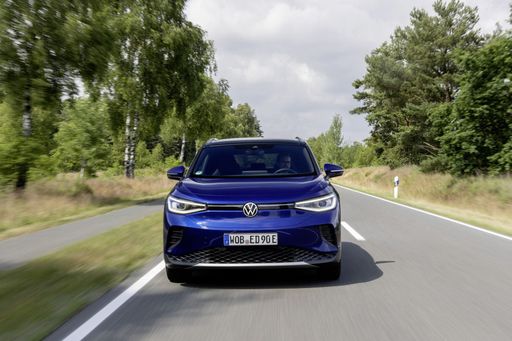 @ Volkswagen
@ Volkswagen
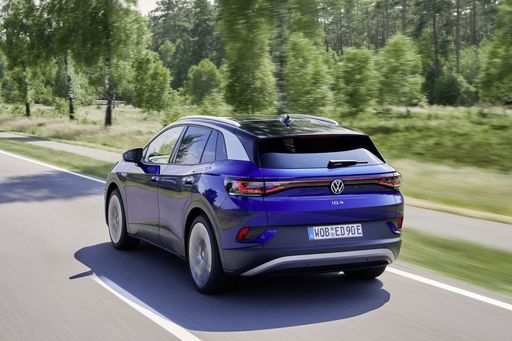 @ Volkswagen
@ Volkswagen
 @ Volkswagen
@ Volkswagen
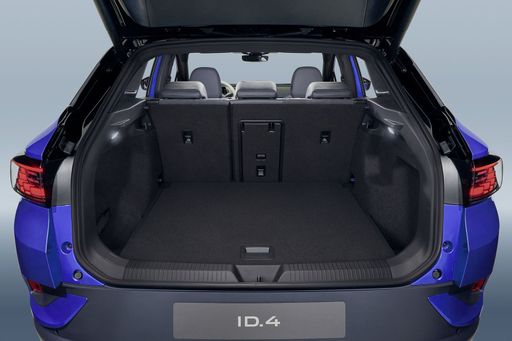 @ Volkswagen
@ Volkswagen
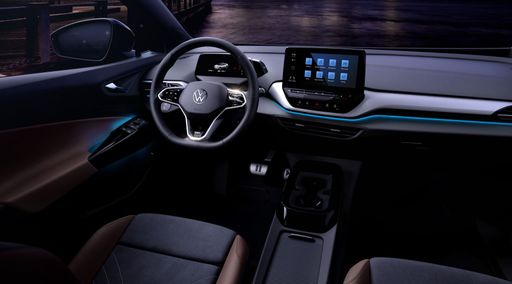 @ Volkswagen
@ Volkswagen

|

|
|
|
|
Costos y consumo |
|
|---|---|
|
Precio
55300 - 69900 €
|
Precio
41000 - 56000 €
|
|
Consumo L/100km
-
|
Consumo L/100km
-
|
|
Consumo kWh/100km
16.2 - 17.3 kWh
|
Consumo kWh/100km
15.6 - 17 kWh
|
|
Autonomía eléctrica
488 - 584 km
|
Autonomía eléctrica
356 - 569 km
|
|
Capacidad de la batería
67 - 79 kWh
|
Capacidad de la batería
52 - 77 kWh
|
|
co2
0 g/km
|
co2
0 g/km
|
|
Capacidad del tanque
-
|
Capacidad del tanque
-
|
Dimensiones y carrocería |
|
|---|---|
|
Tipo de carrocería
SUV
|
Tipo de carrocería
SUV
|
|
Asientos
5
|
Asientos
5
|
|
Puertas
5
|
Puertas
5
|
|
Peso en vacío
2065 - 2185 kg
|
Peso en vacío
1975 - 2248 kg
|
|
Capacidad del maletero
404 L
|
Capacidad del maletero
543 L
|
|
Longitud
4440 mm
|
Longitud
4582 - 4584 mm
|
|
Anchura
1873 mm
|
Anchura
1852 mm
|
|
Altura
1591 mm
|
Altura
1619 - 1634 mm
|
|
Capacidad máxima del maletero
1196 L
|
Capacidad máxima del maletero
1575 L
|
|
Capacidad de carga
395 - 435 kg
|
Capacidad de carga
511 - 551 kg
|
Motor y rendimiento |
|
|---|---|
|
Tipo de motor
Eléctrico
|
Tipo de motor
Eléctrico
|
|
Transmisión
Automática
|
Transmisión
Automática
|
|
Detalle de transmisión
Caja de reducción
|
Detalle de transmisión
Caja de reducción
|
|
Tipo de tracción
Tracción trasera, Tracción total
|
Tipo de tracción
Tracción trasera, Tracción total
|
|
Potencia HP
238 - 442 HP
|
Potencia HP
170 - 340 HP
|
|
Aceleración 0-100km/h
4.6 - 7.3 s
|
Aceleración 0-100km/h
5.4 - 9 s
|
|
Velocidad máxima
180 km/h
|
Velocidad máxima
160 - 180 km/h
|
|
Par motor
420 - 670 Nm
|
Par motor
310 - 679 Nm
|
|
Número de cilindros
-
|
Número de cilindros
-
|
|
Potencia kW
175 - 325 kW
|
Potencia kW
125 - 250 kW
|
|
Cilindrada
-
|
Cilindrada
-
|
General |
|
|---|---|
|
Año del modelo
2024
|
Año del modelo
2023 - 2025
|
|
Clase de eficiencia de CO2
A
|
Clase de eficiencia de CO2
A
|
|
Marca
Volvo
|
Marca
VW
|
¿Qué opciones de tracción tiene el Volvo EC40?
Disponible con Tracción trasera o Tracción total.
Los precios y datos mostrados son estimaciones basadas en los precios de lista en Alemania y pueden variar según el país. Esta información no es legalmente vinculante.
